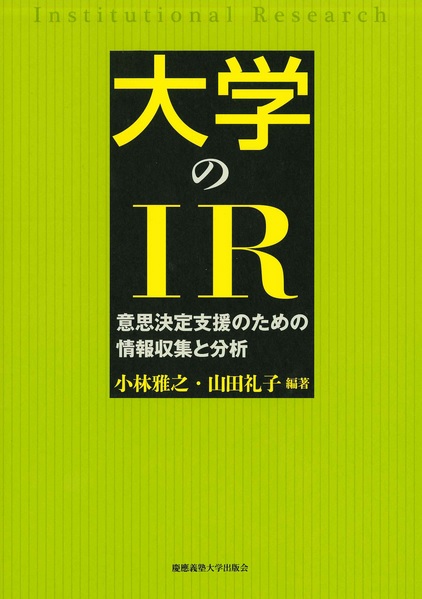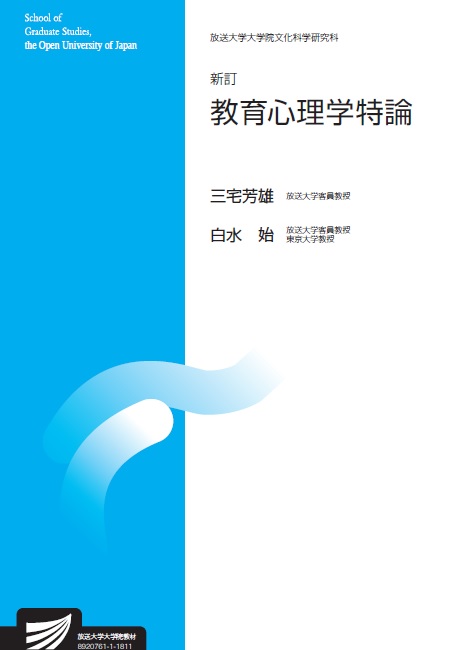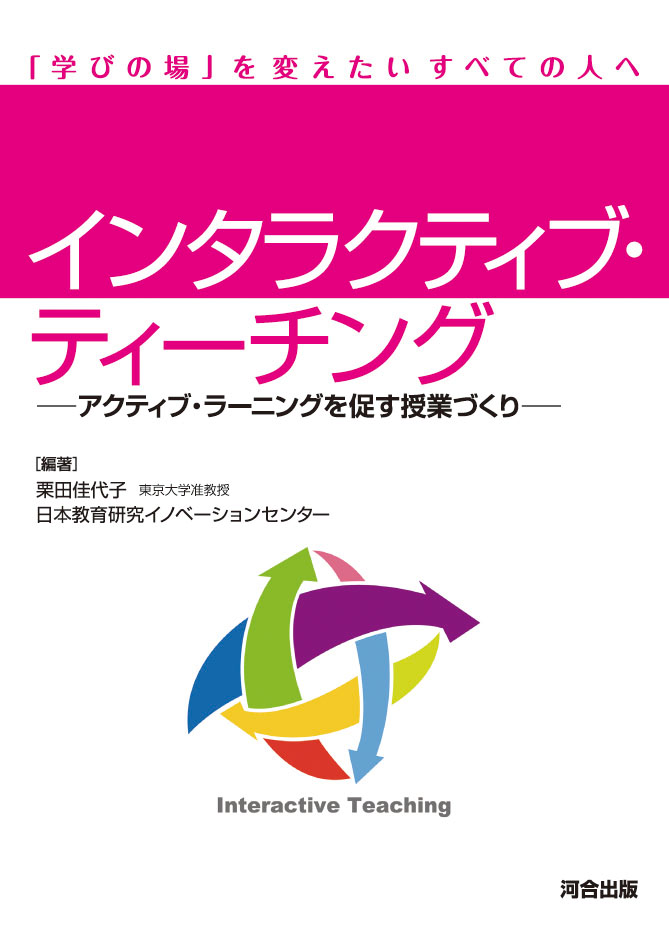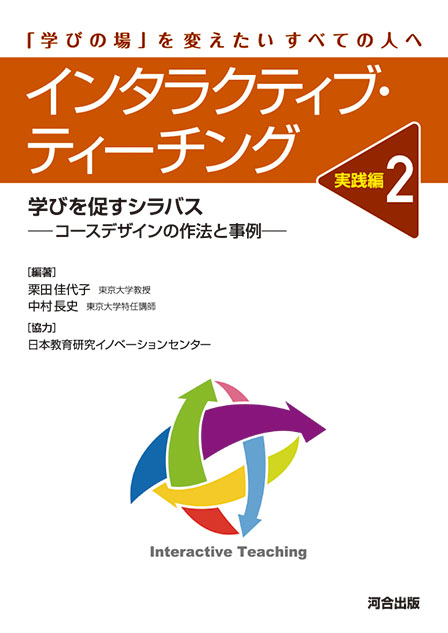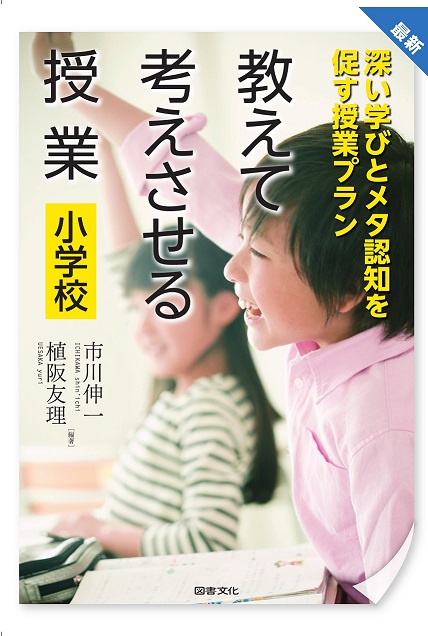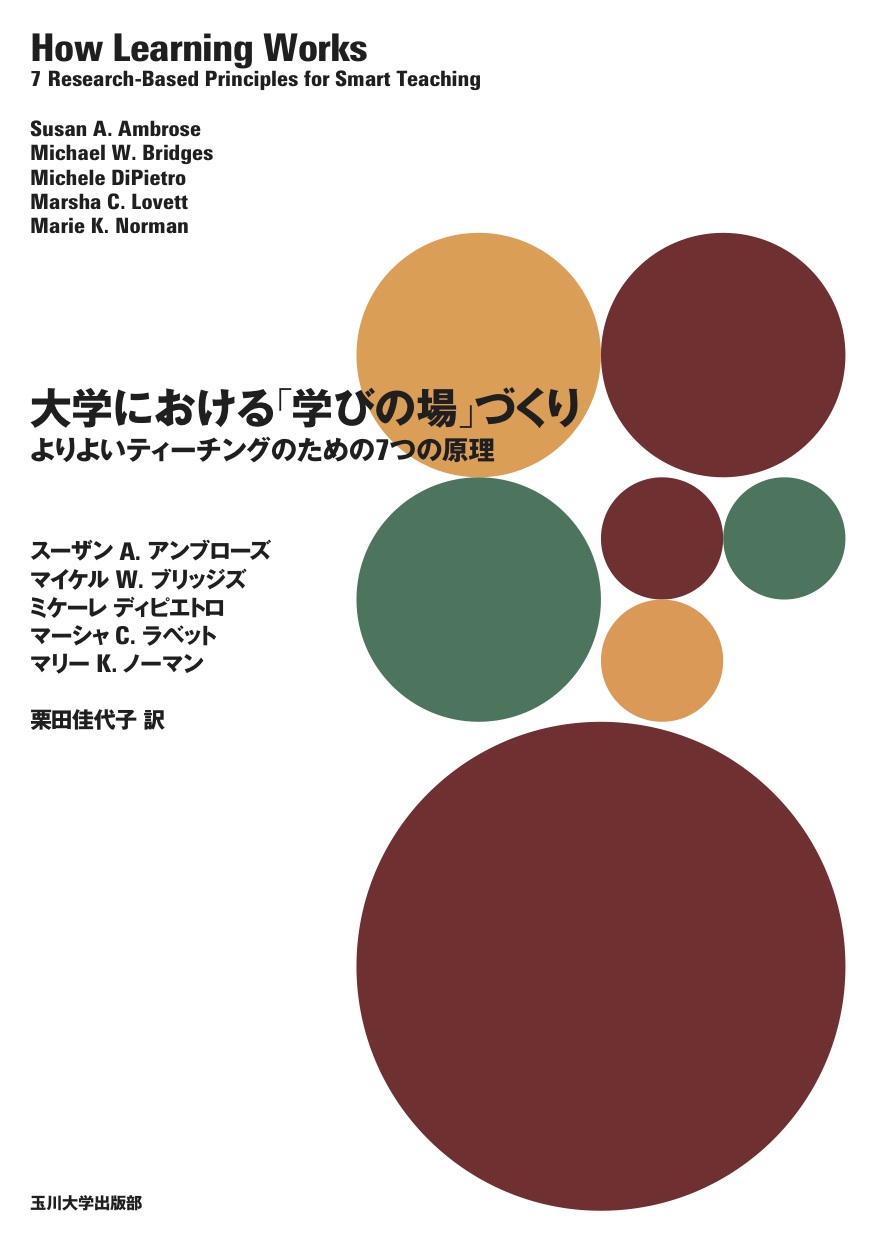
Title
Daigaku ni Okeru ‘Manabi’ no Ba-zukuri (How Learning Works: Seven Research-Based Principles for Smart Teaching)
Size
268 pages, A5 format
Language
Japanese
Released
July 20, 2014
ISBN
9784472404894
Published by
Tamagawa University Press
Book Info
See Book Availability at Library
Japanese Page
This book is a translation of a book in English entitled, How Learning Works. I met this book when I took part in a workshop about teaching at an academic conference in the U.S. Written by the facilitator of the workshop, its content is the same as that of the workshop itself. I approached the facilitator at the time, after the workshop had finished, and expressed my wish to publish the book in Japanese. Thereafter, the book has come to be used as teaching material at UTokyo Future Faculty Program.
The book outlines seven greater principles towards achieving better learning, as backed up by an enormous volume of research that is also presented in the book. Moreover, it prescribes methods for implementing these principles in the classroom. Most writing on this topic deals with either theory or practice individually, whereas this book bridges theory and practice in students’ learning and teaching practices, not only brilliantly but also straightforwardly.
Each of the seven principles is laid out in its own independently coherent chapter, all bearing the same structure.
Any given chapter begins with examples of failures in the classroom. For instance, Chapter 2, which deals with organizing knowledge, the professor wonders why test results are quite low even in classes where it appears as if students are studying diligently. Then, there is an explanation of why such a thing might be happening and what is going on with the students. Next, the principle that relates directly to that cause is presented. The principle in Chapter 2 is, “How students organize knowledge influences how they learn and apply what they know.” The chapter goes over this principle in detail, supporting its discussion with an assortment of relevant research. It then prescribes a variety of specific measures for designing courses based on this principle of organizing knowledge. Every chapter follows this same structure.
This book is written for those who design classes, in other words, teachers, but it is certainly valuable for students as well, since one of the most important things to be learned at university is “how to learn.” It is beneficial to understand the mechanisms of learning, in order to make the classroom a place more conducive to mastering the subject matter. I hope this book serves as a helping hand for anyone in pursuit of better ways to learn.
(Written by KURITA Kayoko, Associate Professor, Center for Research and Development of Higher Education / 2018)
Table of Contents
Introduction Bridging Learning Research and Teaching Practice.
1 How Does Students' Prior Knowledge Affect Their Learning?
2 How Does the Way Students Organize Knowledge Affect Their Learning?
3 What Factors Motivate Students to Learn?
4 How Do Students Develop Mastery?
5 What Kinds of Practice and Feedback Enhance Learning?
6 Why Do Student Development and Course Climate Matter for Student Learning?
7 How Do Students Become Self-Directed Learners?
Conclusion Applying the Seven Principles to Ourselves.



 Find a book
Find a book


